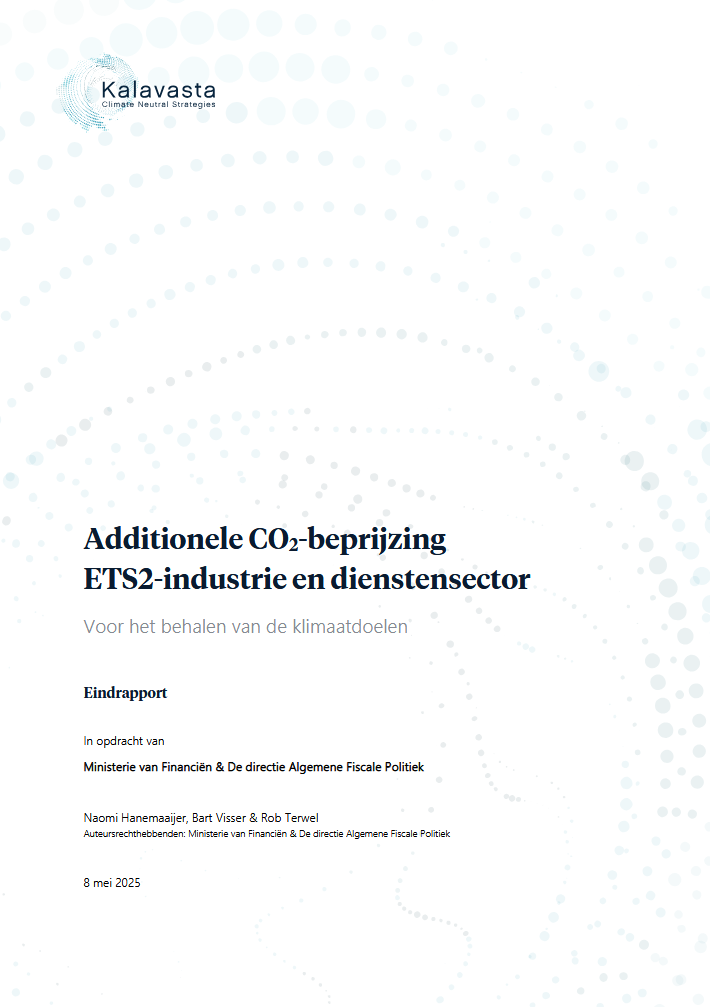Additional CO2 pricing ETS2 industry and service sector


The Climate and Energy Outlook 2024 revealed that the Netherlands is unlikely to achieve its climate target of 55% emission reduction by 2030 with current policies. Starting in 2027, both smaller industries and service sector buildings will need to pay for their CO2 emissions through the European ETS2 system. This research examined whether this CO2 price alone would sufficiently incentivize emission reductions or if additional measures would be necessary. The Ministry of Finance commissioned this study to understand the pricing levels needed and to explore alternatives to subsidies, focusing instead on pricing and regulatory measures that could more effectively drive the transition.
The ETS2 industry, which emitted approximately 2.9 Mton in 2023, already has sufficient profitable emission reduction potential to meet its 2030 target of 1.8 Mton residual emissions without additional CO2 pricing. This is mainly due to current subsidies and the rising energy tax on natural gas until 2030. Particularly for larger companies that can apply for SDE++ subsidies, investments in mechanical vapor recompression, heat pumps, and biomass are profitable. However, this does not automatically mean that companies will actually implement these measures in time, as they face various barriers including grid congestion, permit issues, and the lifespan of existing installations. The study emphasizes that facilitating hybrid electrification is essential, due to grid congestions.
Unlike the ETS2 industry, the service sector requires substantial additional pricing incentives to meet its emission reduction goals. The sector needs to reduce emissions from 5.5 Mton in 2023 to 3.0 Mton in 2030, but with current measures only 1.9 Mton reduction becomes profitable. To make sufficient emission reduction profitable, an additional CO2 levy of 100 €/ton is needed on top of the expected ETS2 price of 55 €/ton. When accounting for grid congestion, this increases to 120-330 €/ton. The service sector faces higher costs for reducing emissions than industry due to higher costs for insulation and lower full-load hours for heat pumps. As an alternative to a generic CO2 levy, targeted adjustments to energy tax on natural gas and electricity could be more effective, though this requires additional research on impacts to other sectors.
The study reveals that achieving complete climate neutrality after 2030 would require theoretically very high CO2 prices for both sectors, indicating that price signals alone will likely not be sufficient. For the industry, the required price would depend heavily on the price of green hydrogen, which carries significant uncertainty. For the services sector, the required CO2 price to make all measures financially attractive would be extremely high. This demonstrates that additional policy instruments beyond pricing, such as normative regulations, will likely become necessary. For the services sector, this could include obligations for insulation and all-electric heat pumps, while continued expansion of heat networks will also contribute to further emissions reduction.